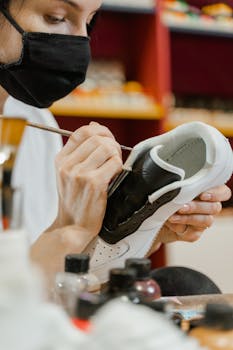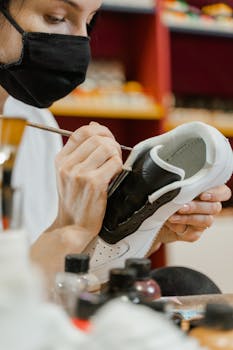Essential Components for Building Your First DIY FPV Racing Drone
Building your own FPV racing drone can be an exciting and rewarding experience. Not only do you get to customize every aspect of your drone, but you also gain a deeper understanding of how it works. However, before you dive into the world of DIY drone building, it’s important to understand the essential components that make up a FPV racing drone.
The first and most important component of any drone is the frame. The frame is the backbone of your drone and it’s what holds all the other components together. When choosing a frame, there are a few things to consider. Firstly, the size of the frame will determine the size of your drone. For beginners, a smaller frame is recommended as it is easier to control and maneuver. Additionally, the material of the frame is also important. Carbon fiber frames are lightweight and durable, making them a popular choice for FPV racing drones.
Next, you will need to choose a flight controller. This is the brain of your drone and it’s responsible for controlling the motors and keeping the drone stable in the air. There are many different flight controllers available, but for beginners, it’s best to choose one that is easy to set up and has a user-friendly interface. Some popular options include the Betaflight and Cleanflight flight controllers.
In order to fly your drone, you will need motors and propellers. The number of motors and propellers you need will depend on the type of frame you have chosen. Most FPV racing drones have four motors and propellers, but some may have six or even eight. When choosing motors, you will need to consider the size and weight of your drone as well as the type of battery you will be using. It’s important to choose motors that are powerful enough to lift your drone, but not too powerful that they drain your battery quickly.
The battery is another essential component of your drone. It provides the power needed to keep your drone in the air. When choosing a battery, you will need to consider the voltage and capacity. The voltage will determine the speed and power of your drone, while the capacity will determine how long your drone can fly. It’s important to choose a battery that is compatible with your flight controller and motors.
To control your drone, you will need a transmitter and receiver. The transmitter is what you hold in your hands and use to control the drone, while the receiver is what is attached to the drone and receives the signals from the transmitter. When choosing a transmitter, make sure it has enough channels to control all the functions of your drone. Additionally, it’s important to choose a receiver that is compatible with your transmitter and flight controller.
Last but not least, you will need a camera and video transmitter for the FPV (first-person view) aspect of your drone. The camera is what captures the video footage and transmits it to your goggles or monitor. When choosing a camera, make sure it has a high resolution and a wide field of view for a better FPV experience. The video transmitter is what sends the video signal from the camera to your goggles or monitor. It’s important to choose a video transmitter with a strong signal and a good range.
In conclusion, building your first DIY FPV racing drone requires careful consideration of the essential components. The frame, flight controller, motors, battery, transmitter, receiver, camera, and video transmitter are all crucial for a successful build. It’s important to do your research and choose high-quality components that are compatible with each other. With the right components and a little bit of patience, you’ll be on your way to building your very own FPV racing drone.
Step-by-Step Guide to Assembling Your DIY FPV Racing Drone

Building your own FPV racing drone can be a fun and rewarding experience. Not only do you get to customize every aspect of your drone, but you also gain a deeper understanding of how it works. However, for beginners, the process of building a DIY FPV racing drone can seem daunting. But fear not, with the right tools and a step-by-step guide, you can easily assemble your very own racing drone.
Step 1: Gather Your Tools and Parts
Before you begin assembling your drone, it is important to have all the necessary tools and parts. Some essential tools you will need include a soldering iron, wire cutters, and a screwdriver set. As for the parts, you will need a frame, motors, ESCs, flight controller, propellers, and a camera. It is important to note that the specific parts you need may vary depending on the type of drone you want to build. It is recommended to do some research and make a list of all the necessary parts before starting.
Step 2: Assemble the Frame
The first step in building your DIY FPV racing drone is to assemble the frame. Start by attaching the arms to the main body of the frame using the screws provided. Make sure to tighten the screws properly to ensure a sturdy frame. Next, attach the motors to the arms using the motor screws. It is important to make sure that the motors are facing the correct direction and are securely attached.
Step 3: Install the Flight Controller
The flight controller is the brain of your drone and is responsible for controlling its movements. To install the flight controller, first, locate the designated area on the frame and secure it using the provided screws. Next, connect the ESCs to the flight controller according to the manufacturer’s instructions. It is important to double-check all the connections to ensure they are correct.
Step 4: Solder the ESCs and Motors
Soldering is a crucial step in building your DIY FPV racing drone. It is important to have some basic soldering skills before attempting this step. Start by soldering the ESCs to the power distribution board. Next, solder the motor wires to the ESCs according to the motor layout diagram provided by the manufacturer. It is important to make sure that all the connections are secure and there are no loose wires.
Step 5: Install the Propellers and Camera
Once the soldering is complete, it is time to install the propellers and camera. Attach the propellers to the motors, making sure they are facing the correct direction. Next, attach the camera to the designated area on the frame using the provided screws. It is important to make sure that the camera is securely attached and facing the correct direction for optimal FPV experience.
Step 6: Connect the FPV System
The final step in building your DIY FPV racing drone is to connect the FPV system. This includes the video transmitter, receiver, and goggles. Follow the manufacturer’s instructions to properly connect all the components. Once everything is connected, turn on your drone and goggles to test the FPV system. Make any necessary adjustments to ensure a clear and stable video feed.
Congratulations, you have successfully built your first DIY FPV racing drone! It is important to note that this is just a basic guide and there may be additional steps or variations depending on the specific drone you are building. It is always recommended to thoroughly read the instructions provided by the manufacturer and do some research before starting the building process.
In conclusion, building your own DIY FPV racing drone can be a fun and rewarding experience. With the right tools, parts, and a step-by-step guide, anyone can assemble their own racing drone. Not only will you have a customized drone, but you will also gain a deeper understanding of how it works. So, what are you waiting for? Start building your very own FPV racing drone today!
Tips and Tricks for Tuning and Flying Your DIY FPV Racing Drone
Building your first DIY FPV racing drone can be an exciting and rewarding experience. Not only do you get to customize and personalize your drone, but you also get to learn about the different components and how they work together to create a high-performance racing machine. However, once you have completed the build, the next step is to tune and fly your drone. This can be a daunting task for beginners, but with the right tips and tricks, you can become a pro at tuning and flying your DIY FPV racing drone.
The first step in tuning your drone is to make sure all the components are properly connected and secured. This includes the motors, ESCs, flight controller, and receiver. It is important to double-check all the connections and make sure they are tight to avoid any potential issues during flight. Additionally, it is crucial to calibrate your flight controller and ESCs to ensure they are working together correctly.
Once all the components are properly connected and calibrated, the next step is to tune the PID (Proportional, Integral, Derivative) settings. These settings control how the drone responds to your inputs and can greatly affect its flight performance. It is recommended to start with default settings and make small adjustments until you find the right balance for your drone. It is also important to note that PID settings can vary depending on the type of flight controller and the weight of your drone, so it may take some trial and error to find the perfect settings.
Another important aspect of tuning your DIY FPV racing drone is to balance the propellers. Unbalanced propellers can cause vibrations and affect the stability of your drone. To balance your propellers, you can use a prop balancer or simply place them on a flat surface and check for any wobbling. If you notice any imbalance, you can use a small piece of tape or sandpaper to adjust the weight and achieve a smooth rotation.
In addition to tuning the components, it is also crucial to properly set up your radio transmitter and receiver. This includes configuring the channels, endpoints, and expo settings. It is recommended to follow the instructions provided by your specific transmitter and receiver to ensure they are properly set up for your drone.
Once you have completed the tuning process, it is time to take your DIY FPV racing drone for its first flight. It is important to start with a small and open area to avoid any potential crashes. Before taking off, make sure to do a pre-flight check to ensure everything is working correctly. This includes checking the motor rotation, flight modes, and battery voltage.
When flying your drone for the first time, it is important to take it slow and get a feel for how it responds to your inputs. It is also recommended to have a spotter with you to help keep an eye on the drone and provide feedback. As you become more comfortable with flying, you can start to push the limits and try out different maneuvers and flight modes.
One of the most important tips for flying your DIY FPV racing drone is to always be aware of your surroundings. This includes avoiding flying near people, buildings, and other obstacles. It is also important to keep an eye on your battery voltage and land your drone before it reaches critical levels to avoid damaging the battery.
In conclusion, tuning and flying your DIY FPV racing drone may seem like a daunting task, but with the right tips and tricks, you can become a pro in no time. Remember to properly connect and calibrate all the components, tune the PID settings, balance the propellers, and set up your radio transmitter and receiver. And most importantly, always fly safely and be aware of your surroundings. With practice and patience, you will be able to tune and fly your DIY FPV racing drone like a pro.



